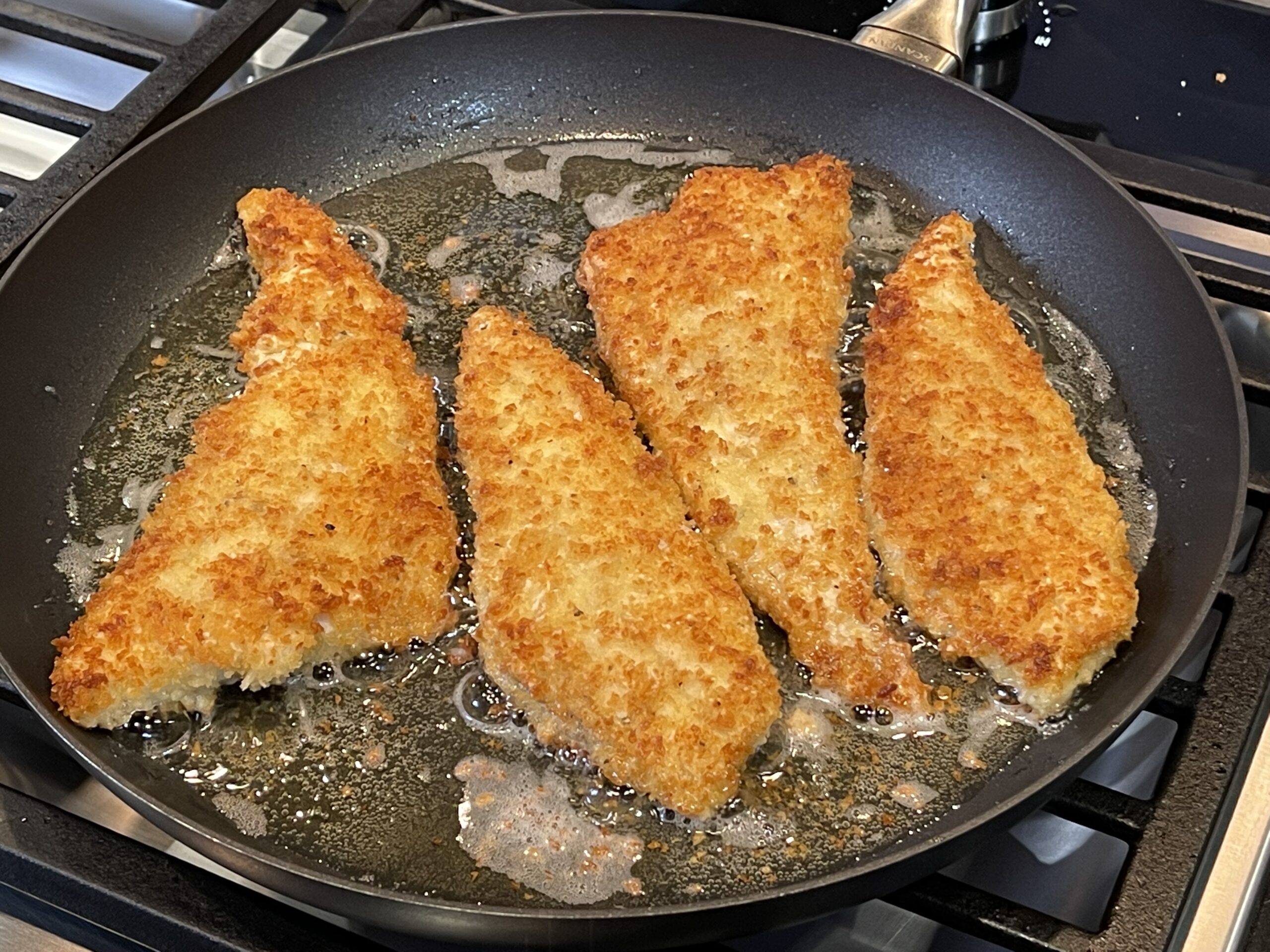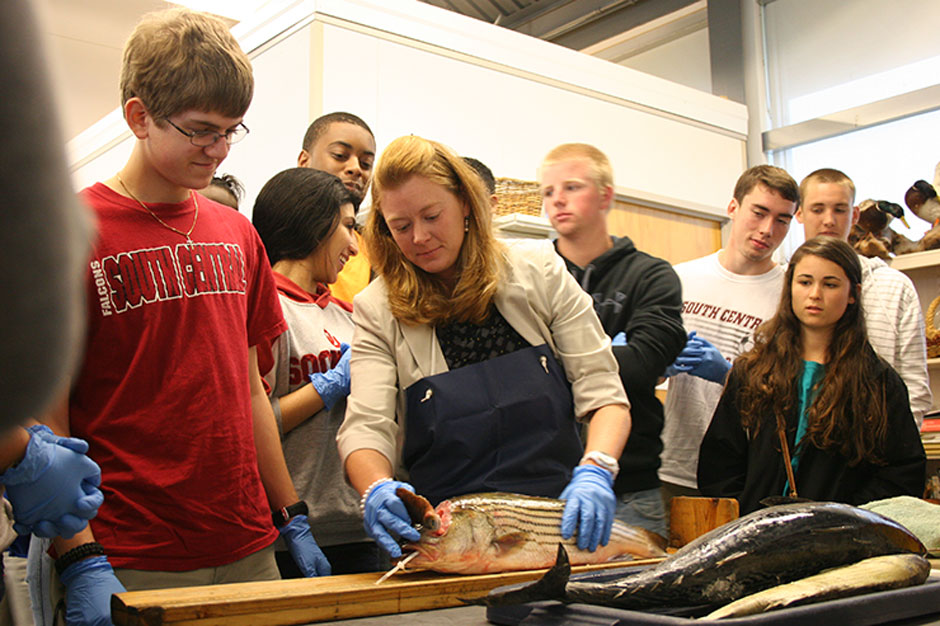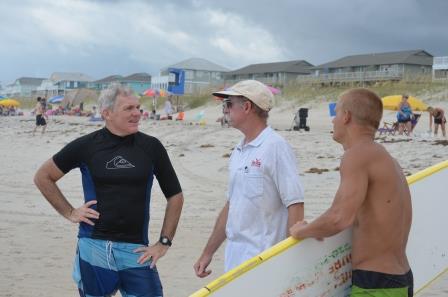LOCAL CATCH: TAMING THE TROUT: Burgers Go Fishing

Have you ever been conflicted about whether to have a juicy hamburger for lunch from the nearest fast food drive-through or a fancy rainbow trout entrée from your favorite seafood restaurant? Probably not. The two are completely different culinary experiences.
While burgers and trout traditionally appear to belong in different menu categories, Sunburst Trout Farms in Haywood County is trying to erase this distinction. With the help of North Carolina Sea Grant, Sunburst has developed an assortment of trout burgers that feeds the interests of burger and seafood enthusiasts while providing healthier options than traditional fast-food joints.
The inspiration for the new burger came from Sunburst’s desire to reduce waste. Every time employees cut fish for premium trout fillet products, a sizeable piece of meat near the backbone was discarded. While the quality of the meat matched that of high-end fillets, its quantity and condition did not.
“The meat is not a reject,” stresses Wes Eason, sales manager of Sunburst Trout Farms. “It is high-quality meat that, if it was not in chunks, we would have used it as fillets. So we were looking for ways to utilize this meat.”
The journey, however, from morsels of meat on a trout backbone to a sumptuous burger was not obvious or intuitive.
“Sunburst had offered a trout burger many years ago, but the product had been dropped,” says Charles Hudson, research and development chef at Sunburst. When Sunburst revived the idea, Hudson decided to approach the burger with a fresh perspective. For this, he reached out to Dan Kauffman who is on faculty at Virginia Polytechnic Institute and State University, and is also a part of the Virginia Sea Grant extension team. Hudson and Kauffman knew each other through previous professional interactions.
Kauffman brought Hudson and North Carolina Sea Grant’s seafood technology and marketing specialist Barry Nash together to work on the burger during a 2013 meeting at the Culinary Institute of Virginia.

“I wanted to make the new trout burger come as close to the texture and mouth-feel of a traditional beef hamburger,” Hudson says.
This is where Nash stepped in — to perfect the texture of the burger.
“A hamburger has at least 30 percent fat in it. A trout fillet only has around 5 to 6 percent fat. The fat gives the hamburger a softer texture and the low fat in trout made it firm. The first prototypes did not work at all,” Nash explains.
Nash and Hudson had to compensate for the lack of fat in the meat by adjusting the ingredients of the patty. Also, they had to add components to prevent the burger, which was high in unsaturated fat that spoils quickly, from going bad too fast.
All the modifications were made while ensuring the ingredients were free of genetically modified organisms found in most additives used for food preservation and for adjusting fat content. “That in itself was a challenge,” Nash recalls.
This was an opportunity for Nash to extend his ongoing work helping seafood processors conceptualize, develop and market value-added seafood products that can cater to a changing consumer base and compete with imports.
HEALTHIER, TASTIER, AFFORDABLE
Perfected through a series of tasting sessions and workshops, Hudson and Nash came up with a taste that allows the burger to complement various kinds of condiments. A burger with a light flavor could meld with other tastes easily without overwhelming the palate and provide flexibility to the recipe.

“People can add any variety of toppings and condiments without clashing with the flavor of the burger itself. Consumers can dress it up in any way they like,” Hudson says. “We will be looking to add different flavor profiles for the burger in the future.”
The juicy beef hamburger sets the benchmark for taste, texture and flavor for any product that calls itself a burger, Hudson notes. This product, he adds, tries to replicate the texture of the traditional beef burger while adding its own seafood twist to the flavor.
“Every product that is called a burger is compared to the traditional hamburger. I never wanted to mimic the flavor of the beef hamburger. My goal was to look at the elements that make the beef hamburger the gold standard and translate those elements to make sense to the trout burger,” Hudson says.
Also, the trout burger costs less than the trout fillets that comprise more than half of Sunburst Trout Farms’ product portfolio.
“It is cheaper than our other products. Therefore, it is for those restaurants and outlets that cannot afford our existing high-end products,” Eason adds. “This would be a more affordable option to our trout fillets.”
Currently the trout burger is available only to wholesale bulk buyers such as restaurants. Sunburst will be marketing it to retail chains soon so that people can buy them in grocery stores. The wholesale price is $8 a pound.
The trout burger adds to Sunburst’s line of value-added seafood products that are quick to prepare, versatile and appealing to bulk consumers, such as restaurants, and retail customers who purchase trout from grocery stores, Hudson adds. The company currently uses the same kind of trout meat for its smoked trout jerky and is looking to expand their offerings of value-added products.

The burger also tells the story of how fish processers and retailers are working to produce innovative, value-added seafood products that have longer shelf life and can stand out in a marketplace flooded with cheaper seafood imports.
“There is only so much you can do with just a fillet. Consumers need products that are healthy, flavorful and easy to cook,” Nash says.
Value-added seafood offerings also cater to a segment of consumers who are moving from more traditional seafood items, such as fillets, toward products that are semiprocessed. While developing such recipes using seafood is a challenge, products such as the trout burger, trout jerkies, trout dips and crab cakes are making way for more processed foods that can cater to a changing consumer base while fighting competition from imports.
The lessons learned from the trout burger will be important for other freshwater and saltwater food products that processors are trying to conceptualize, implement and market.
Nash is creating a publication using the trout burger as a case study to help seafood processors. Hudson hopes to present the case study at the Research Chefs Association Conference in New Orleans in March 2015.
“The whole idea is to provide a case study that would help other seafood processors come up with a concept of a value-added, ready-to-eat product and take it from the concept to being market ready,” Nash says. “It will guide them through the whole process.”
Learn about other value-added seafood products developed by North Carolina Sea Grant:
- Value-Added Technology: Developing a Smoked Soft Crab: ncseagrant.ncsu.edu/ncseagrant_docs/products/2010s/value-added_technology.pdf.
- Ready-To-Sell: Developing Value-Added Seafood Products: ncseagrant.ncsu.edu/ncseagrant_docs/products/2010s/bp_readytosell.pdf.
This article was published in the Autumn 2014 issue of Coastwatch.
For contact information and reprint requests, visit ncseagrant.ncsu.edu/coastwatch/contact/.


